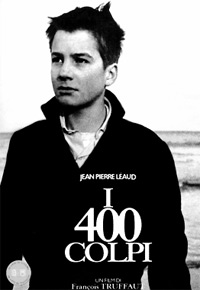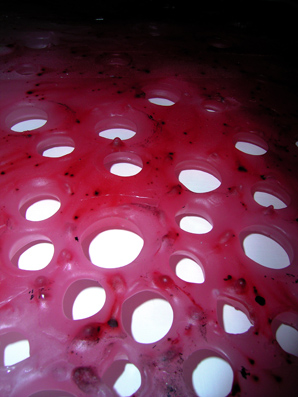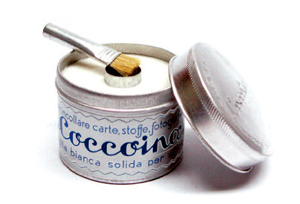Antonio Gambini è un Grande Interprete. Antonio Gambini non esiste. Antonio Gambini è artificiale. Antonio Gambini è un esperimento riuscito.
| « http://www.bbc.co.uk/new... | CONTRO IL FEMMINICIDIO » |
Despite his utopian vision, Tatlin followed the example of the Moscow Constructivists and began to design useful, practical objects for everyday use. These were not simply examples of applied art, and decoration in this context was anathema to Tatlin. Under the Constructivists the design of the most mundane objects of daily use represented the partial but substantial realization of the new society. From Tatlin’s point of view the structure that he designed arose primarily from a study of functions, materials and production. Aesthetic considerations would arise out of the coherence of this investigation, so that the application of decorative devices whether in two or three dimensions had no bearing upon his work, which would inevitably be style-less. This also meant that Tatlin was not specifically restricted to any specialist field of design, although in practice he preferred those areas that most directly involved the exploration of material properties. He was not, for example, a poster designer, but he was an innovator in an extraordinarily wide range of design activities. He designed an efficient stove, for example, that showed little concern for elegance. Similarly he designed workers’ clothes for everyday use and an overcoat that had detachable linings to make it useful under a wide variety of conditions. These arose in response to practical function and the qualities of materials. The objects of the new society were designed without the pretensions of style to which much of a market-orientated fashion industry would look in evolving its designs. Conditions in Russia after the Revolution substantially removed the profit motive. In Tatlin’s case this permitted his design work to flow naturally from his intensive study of materials. He also designed ceramics and furniture. In neither case did he adopt or transform a traditional design solution. Characteristically, he would analyse the requirement and its resolution in material terms from the beginning: he made ceramic jugs to be held in the hands without handles, and he designed a bentwood chair with fluid curves, not simply because they were elegant, but because he intended the curved wood to flex with the movement of the person seated in the chair, as if it were an extension of the body.
Perhaps the least material-orientated activity Tatlin recurrently pursued was stage design. Even at the height of his pioneering and experimental first constructions he had worked simultaneously on designs for an unrealized production of Wagner’s Der fliegende Holländer (e.g. costume designs, 1915–17; St Petersburg, Rus. Mus.). He had also designed the production of Zangezi at the Museum of Artistic Culture in 1923 (see §2 above), and the theatre was to play an important part in his later life when experiment had lost much of its governmental support. He moved to the Art Institute in Kiev to direct the theatre, film and photography department in 1925–7, but in 1927–30 he was again teaching in the woodwork, metalwork and ceramics faculties of Vkhutein (the Higher Artistic and Technical Institute; see Vkhutemas) in Moscow. If his stage designs after 1925 were less innovative, he was prolific in his output, contributing to 23 different productions for many different theatres up to 1952.
One last construction project of extraordinary vision and originality occupied Tatlin in 1929–32. This was the Letatlin (from Rus. letat’: ‘to fly’,+Tatlin), an ‘aircycle’ or glider for use by the population, relying only upon human power and the wind, and evolved from the study of bird flight (designs untraced; model reconstructed 1960; Moscow, N.E. Zhukovsky Mem. Mus.). With characteristic thoroughness Tatlin assembled a research group and investigated the structure of birds’ wings even to the extent of dissecting the wings of cranes. This involved reverting to a study of flight long superseded by the success of the mechanized aeroplane, but Tatlin was still inspired by the memory of birds following his sailing ship in the journeys of his youth, flying for days while scarcely moving a muscle. This was an image of harmony with nature to which the mechanized aeroplane could not aspire. Tatlin’s study of materials had led to a new appreciation of the efficiency of natural forms and structures. While his research attracted the attention of aeronautics specialists, doubt still exists as to whether his gliders ever flew with any effectiveness. He carried out his studies at the great belltower of the Novodevichy Monastery in Moscow. He must have seemed more of a visionary than an engineer in that place of domes and icons, surrounded by extraordinary flying machines and playing the many-stringed folk instruments that he constructed himself. Tatlin resumed painting in oils from the early 1930s, producing works that are relatively conventional in style and subject-matter (e.g. Flowers, 1940; St Petersburg, Rus. Mus.). He was given a personal retrospective exhibition at the Pushkin Museum in Moscow in 1931. The first posthumous retrospective in Russia was held in Moscow at the Union of Writers and other locations in 1977, long after his work had gained wide recognition in the West. It marked the beginning of a new reassessment of his work by Soviet historians.
Source: Oxford University Press
AREA PERSONALE
MENU

I MIEI BLOG AMICI
SOMMARIO
Procoio
Mister B
Grande abbuffata
La danza
Il vuoto e il volo
Antonio Gambini
Gambini risorge
La pianta
Miracoli di Gambini
Eclissi di Antonio Gambini
Magna Graecia
In gran forma
Il potere ha deciso che siamo tutti uguali
Monologo dello spazzacamino
Shadow-line
"Mrs. Dalloway" Virginia Woolf
1859 - On the origin of species
Ippopotamo Pimmeo & Kor
Michail Aleksandrovic Bakunin
L'etica in Platone e Aristotele
Σιγά μην Κλάψω
The BlacK Hat
Industria Culturale
Radioactive Milk
TAG
CERCA IN QUESTO BLOG
SEI DEL GATTO

Milano, 12 dicembre 1969 h 16.37
Una bomba esplode nella sede della Banca nazionale dell'agricoltura
Piazza Fontana
Strage


MALATTIE LETTERARIE
http://www.radio.rai.it/podcast/A42415801.mp3
Spesso il male di vivere ho incontrato:
era il rivo strozzato che gorgoglia,
era l'incartocciarsi della foglia
riarsa, era il cavallo stramazzato.
Bene non seppi, fuori del prodigio
che schiude la divina indifferenza:
era la statua nella sonnolenza
del meriggio, e la nuvola, e il falco alto levato.
THE BRIDE OF THE MONSTER - BELA LUGOSI

CHI PUò SCRIVERE SUL BLOG
ULTIMI COMMENTI
Inviato da: flappy bird
il 17/02/2014 alle 13:08
Inviato da: puzzle bubble
il 29/04/2012 alle 13:12
Inviato da: antonio.gambini
il 13/03/2012 alle 17:26
Inviato da: Saturnoconto75
il 03/03/2012 alle 10:13
Inviato da: antonio.gambini
il 20/08/2011 alle 10:31
εικασIα


DANGER


GLASNOST
"Il mondo … questo grosso essere assurdo. Non ci si poteva nemmeno domandare da dove uscisse fuori, tutto questo, né come mai esisteva un mondo invece che niente. Non aveva senso, il mondo era presente dappertutto, davanti, dietro. Non c’era stato niente prima di esso. Niente. Non c’era stato un momento in cui esso avrebbe potuto non esistere. Era appunto questo che m’irritava : senza dubbio non c’era alcuna ragione perché esistesse, questa larva strisciante. Ma non era possibile che non esistesse.



